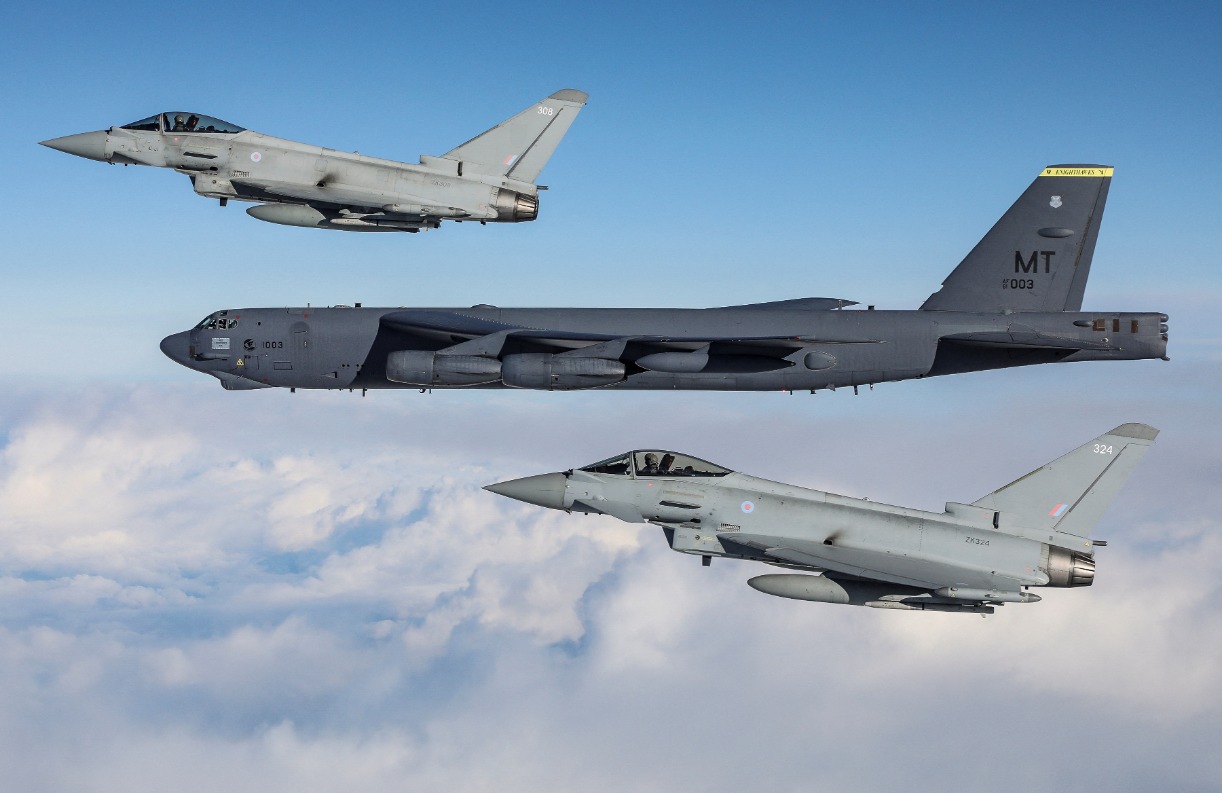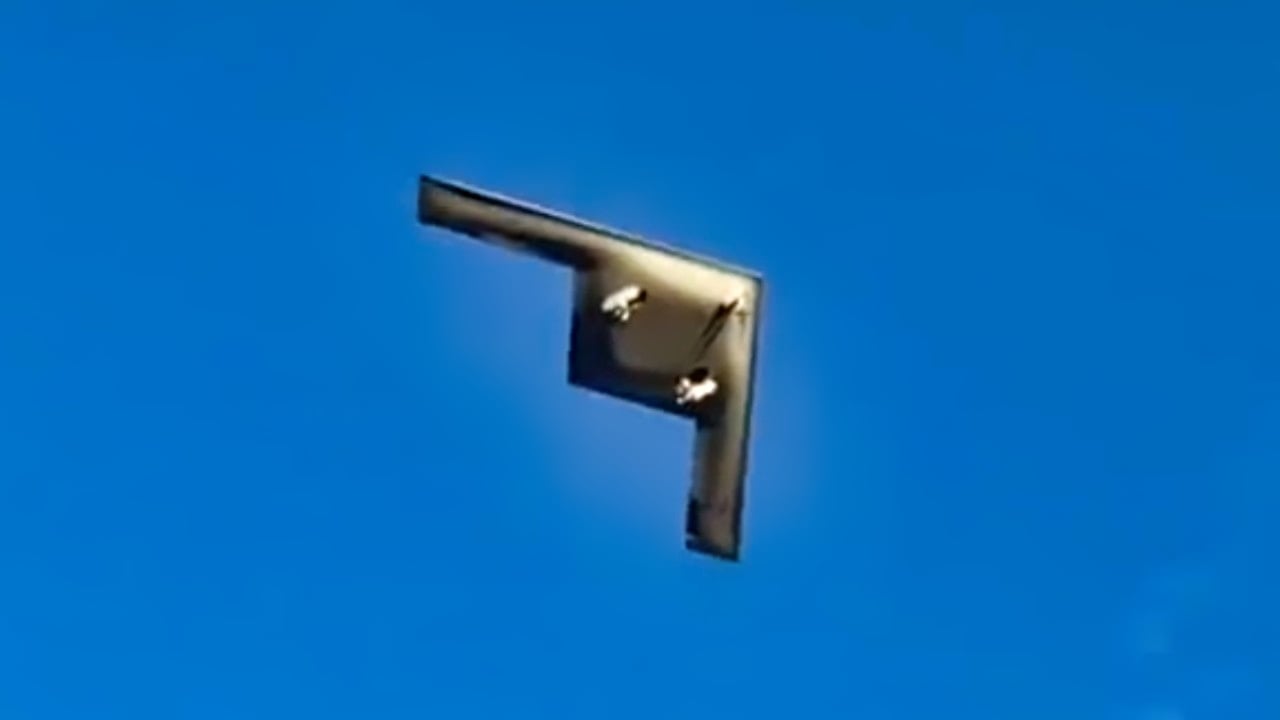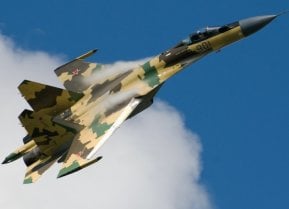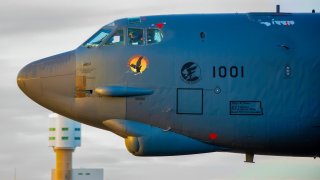What Makes the B-52J the Air Force’s Sky Monster Bomber?
The B-52 Stratofortress, which first flew in 1952, is undergoing upgrades to the B-52J model to extend its service life into the 21st century.
Summary and Key Points: The B-52 Stratofortress, which first flew in 1952, is undergoing upgrades to the B-52J model to extend its service life into the 21st century.

-The B-52J will feature new Rolls-Royce F130 engines, an advanced radar system, and enhanced electronic warfare capabilities.
-With a range of approximately 8,800 miles, it will carry conventional and nuclear weapons, including hypersonic missiles.
-The U.S. Air Force plans to upgrade 76 existing B-52Hs to the B-52J standard by the 2040s, ensuring this iconic bomber remains a critical component of the strategic bomber fleet for decades to come.
B-52J: The Legendary Bomber's 21st Century Upgrade
Take a moment to consider the greatness that is the United States Air Force’s B-52 Stratofortress long-range bomber.
Having first taken wing in 1952, when Harry S. Truman was the president of the United States, the Red Scare was raging, and when a 41-year-old Ronald Reagan was in his final year serving as the president of the Screen Actor’s Guild (SAG), the B-52 is being yet another lifespan extension.
This time, in the form of its vaunted B-52J model. With the additions that the Air Force is planning for this iteration of the legendary long-range bomber, the B-52 will likely make it to its hundredth-year anniversary.
What is the B-52J?
The B-52J is the latest iteration of the iconic Boeing B-52 Stratofortress strategic bomber. It represents a significant upgrade over previous B-52 variants, aiming to extend the operational life of the aircraft well into the 21st century. The B-52J will differ from its predecessors in several key areas, including the integration of new engines, radar systems, and avionics upgrades.
One of the most significant changes is the replacement of the original Pratt & Whitney TF33 engines with Rolls-Royce F130 engines. These new engines are expected to increase fuel efficiency by at least 20%, reduce maintenance costs, and improve the bomber's overall performance. The F130 engines will also extend the aircraft's service life, allowing the B-52J to remain in service for several more decades.
The B-52J will also feature a new radar system, a modified variant of the F/A-18E/F Super Hornet's APG-79 AESA radar. This advanced radar will provide the B-52J with improved detection, tracking, and targeting capabilities, enhancing its effectiveness in both offensive and defensive operations.
In terms of availability, the first B-52J is expected to enter service in the late 2033, that’s farther out than what its designers had originally intended. Ultimately, the entire fleet of 76 B-52H aircraft will be upgraded to the B-52J standard by the 2040s. The Air Force plans to build a total of 76 B-52J aircraft, as it will be an upgrade of the existing fleet rather than the procurement of new aircraft.
Some B-52J Capabilities That Will Make It a 21st-Century Monster
The B-52J will have a range of approximately 8,800 miles (14,162 km, for those who do not hail from the only country that has landed men on the lunar surface), allowing it to conduct long-range missions with minimal refueling. The aircraft's defensive capabilities will include an advanced electronic warfare (EW) suite, which will allow it to counter enemy radar and missile systems.
Additionally, the B-52J will be equipped with the AN/ALQ-249(V)1 countermeasure system, which provides active and passive jamming capabilities against a wide range of threats.
This is key because so much has been said about the B-52 being too old to be relevant to today’s battlefield, in which American rivals focus their efforts less on overwhelming US military capabilities as much as denying them using a variety of technological methods (such as jamming or drone swarming).
The B-52J will be crewed by a team of five: two pilots, a radar navigator, an electronic warfare officer, and a weapons systems officer. This crew configuration will remain unchanged from previous B-52 variants.
So, even Major Kong would recognize the bird, despite it being 60 years older than when he infamously rode the nuclear bomb down to its target deep inside the Soviet Union.
In terms of armaments, the B-52J will be capable of carrying a wide range of weapons, including conventional and nuclear bombs, cruise missiles, and precision-guided munitions. The aircraft will also be able to carry hypersonic weapons, such as the AGM-183 Air-Launched Rapid Response Weapon (ARRW), although the Air Force has decided to focus on the Hypersonic Attack Cruise Missile (HACM) instead.
The B-52J will be able to carry and potentially fire hypersonic weapons.
The Air Force is working to ensure that the B-52 is able to carry as many hypersonic cruise missiles as possible, and is planning to develop new pylons to maximize the bomber's hypersonic weapons load. The B-52J is also undergoing hypersonic weapon familiarization training, further indicating its capability to operate with these advanced weapon systems.
A Forever Plane
So, as you can see, the B-52J represents a significant upgrade to the venerable B-52 Stratofortress, extending its operational life and enhancing its capabilities in the face of evolving threats. With new engines, radar systems, and avionics, the B-52J will remain a vital component of the United States' strategic bomber fleet well into the 21st century.
It might seem astonishing that a nearly century-old bomber would continue to be the primary long-range bomber for the Air Force, but that just speaks to the old adage of, “They don’t make ‘em like they used to” (or, more appropriately, “if it ain’t broke, don’t fix it!”).
Sure, the Air Force has other bombers in its arsenal—notably the proposed B-21 Raider—but none have the carrying capacity and versatility that the B-52 had demonstrated repeatedly from the Korean War to the present.

The Air Force is unlikely to ever innovate, mass produce, and maintain a plane as great as the B-52.
Author Experience and Expertise: Brandon J. Weichert
Brandon J. Weichert, a National Interest national security analyst, is a former Congressional staffer and geopolitical analyst who is a contributor at The Washington Times, the Asia Times, and The-Pipeline. He is the author of Winning Space: How America Remains a Superpower, Biohacked: China’s Race to Control Life, and The Shadow War: Iran’s Quest for Supremacy. His next book, A Disaster of Our Own Making: How the West Lost Ukraine, is due October 22 from Encounter Books. Weichert can be followed via Twitter @WeTheBrandon.
All images are Creative Commons or Shutterstock.
From the Vault
Russia Freaked Out: Why the U.S. Navy 'Unretired' the Iowa-Class Battleships
Battleship vs. Battlecruiser: Iowa-Class vs. Russia's Kirov-Class (Who Wins?)


